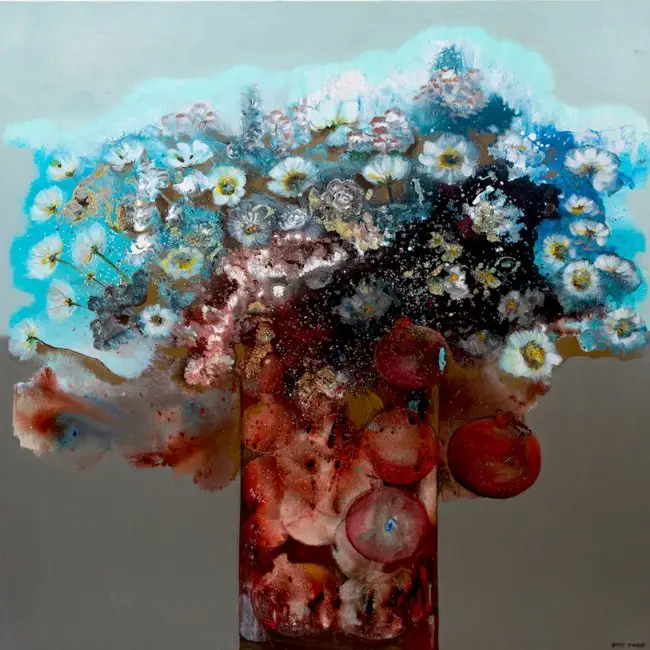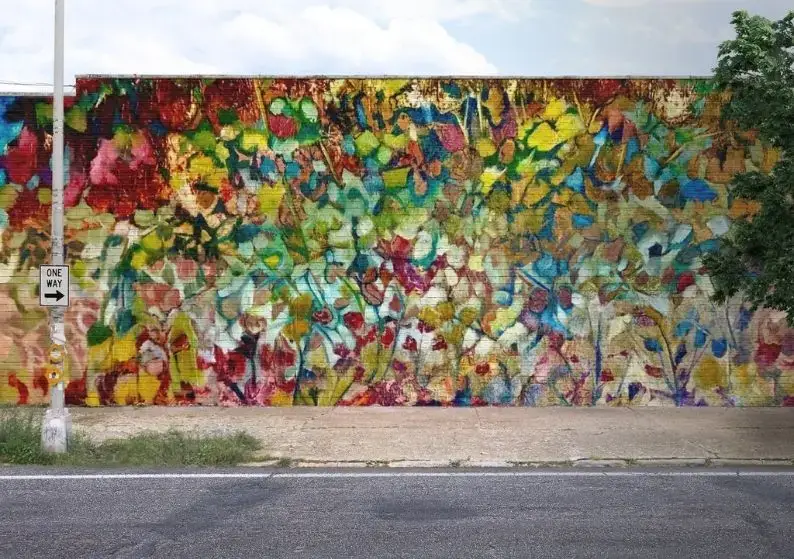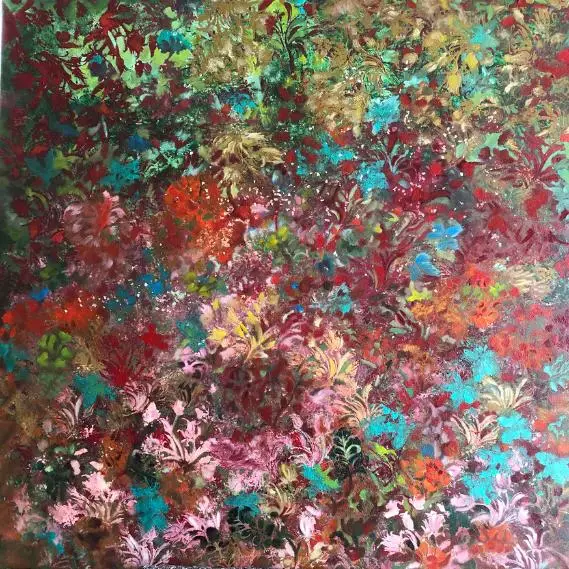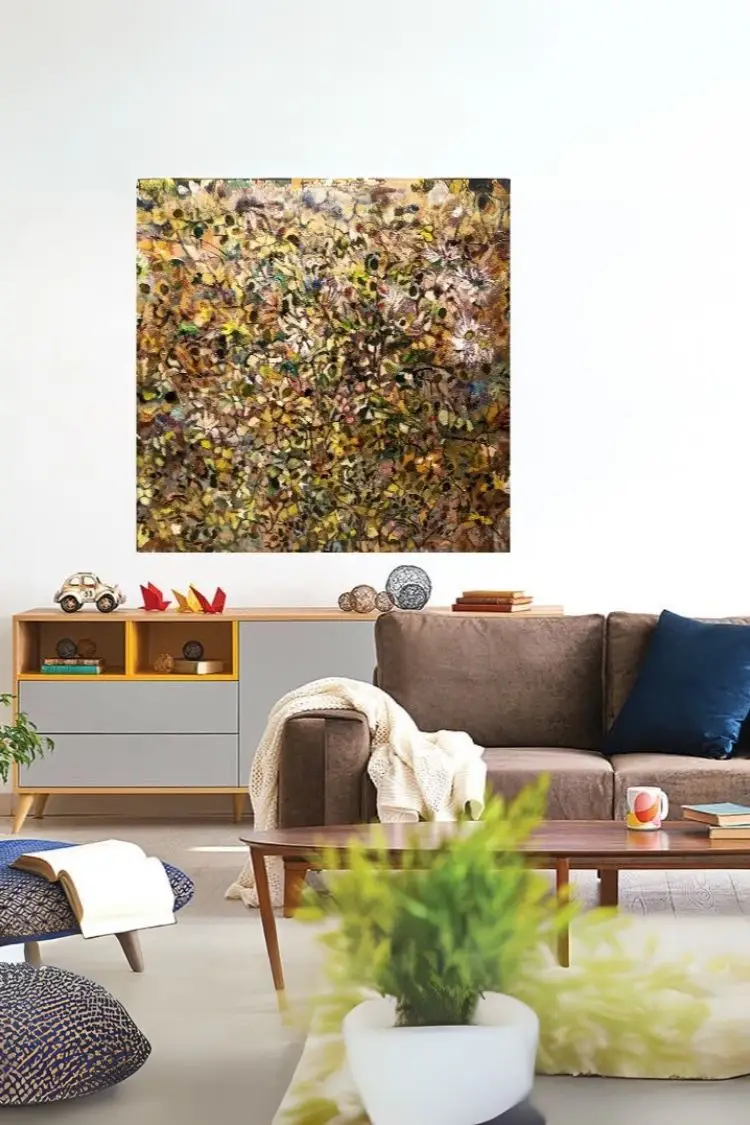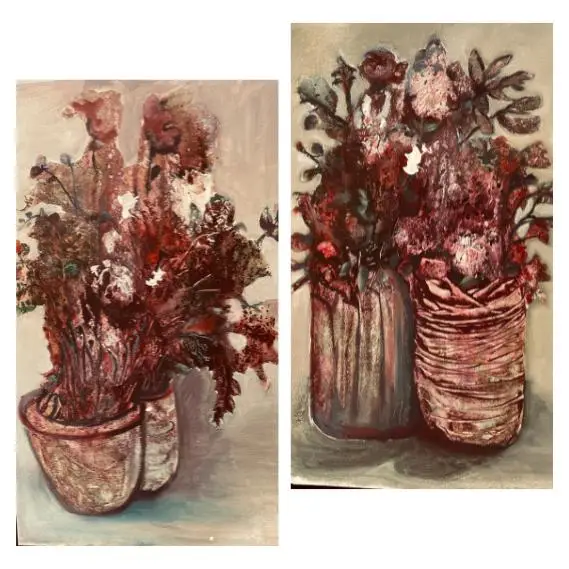
The psychology of abstract art lies in how our brains and emotions interpret colour, shape, and rhythm before language or logic. Abstract art resonates because it connects to the limbic system — the part of the brain that processes feeling and memory — allowing us to feel before we think.
Abstract art speaks directly to emotion and intuition, bypassing logic to create a personal and universal connection at once.
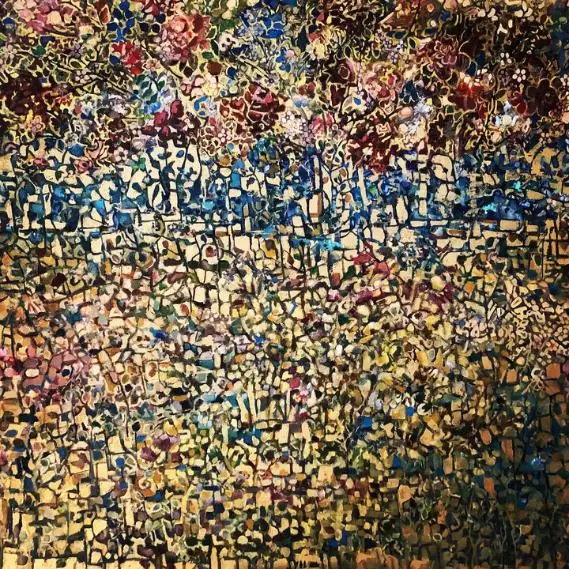
When someone stands before an abstract painting and says, “I don’t know why, but I feel something,” they’ve already understood it. That instinctive, wordless reaction is the essence of what makes abstraction powerful.
I’ve seen people fall silent before a painting — not because they’re confused, but because they’re moved. The human brain responds to visual rhythm, texture, and hue long before the thinking mind can label what it sees. In those moments, emotion leads, not intellect.
As I mentioned in my guide to understanding abstract art, we connect through energy more than explanation. That’s why abstraction reaches across language, culture, and time. It speaks in colour—the most primal and immediate form of communication.
Every shade carries both psychological and physiological weight. Studies show that colour triggers emotional and physical responses: red can raise pulse rate and attention; blue slows breathing and encourages calm; yellow stimulates optimism and clarity.
In my own practice, I think of colour as emotion embodied. When I work with deep cobalt, I feel its stillness and depth; when I mix burnt sienna and gold, I feel warmth, memory, and light. The pigments themselves seem to hold emotion.
These responses are not learned — they’re ancient. Long before we had words, we recognised danger in red, renewal in green, and safety in blue. That instinct still lives in us, shaping how we respond to visual rhythm and tone.
In my reflection on the beauty of colour and emotion, I described how hues interact like human relationships — sometimes harmonious, sometimes tense. Those relationships between colours are what give abstract art its pulse.
Abstract art doesn’t only communicate through colour — it speaks through rhythm, balance, and movement, the invisible patterns that guide the eye.
The brain naturally searches for order, symmetry, and rhythm. When we view an abstract composition, our visual cortex tries to trace lines and follow forms, finding meaning even within chaos. That’s why a strong composition feels satisfying — it gives the mind just enough structure to rest inside uncertainty.
I often think of a painting as a piece of music. Curved lines echo melody, while textured surfaces act as percussion. Even stillness — the empty space between gestures — creates rhythm. These visual beats move the body in subtle ways, engaging our sense of timing, flow, and balance.
That’s why abstract art often feels like something you experience physically, not just visually. You lean in, breathe differently, and sense expansion or contraction. It’s the body understanding what the mind doesn’t need to explain.
One of the most fascinating aspects of the psychology of abstract art is how it bypasses the brain’s language centres.
When you look at a realistic image — a face, a tree, a landscape — your brain labels it instantly: portrait, forest, sky. The verbal mind activates. But when you look at an abstract painting, that automatic naming system has nothing to hold onto.
Instead, activity shifts to regions of the brain associated with emotion, empathy, and imagination. The mind relaxes into a more meditative state. That’s why viewers often describe abstract art as peaceful or even spiritual. It’s not confusion — it’s surrender.
This is also why many collectors describe their connection with abstract paintings as emotional rather than analytical. They may not know why they love a piece — they simply feel that it’s right.
When I explored this in my writing on mindfulness and art, I described this as the moment when words fall away and presence takes over — a psychological shift from thinking to feeling, from naming to being.
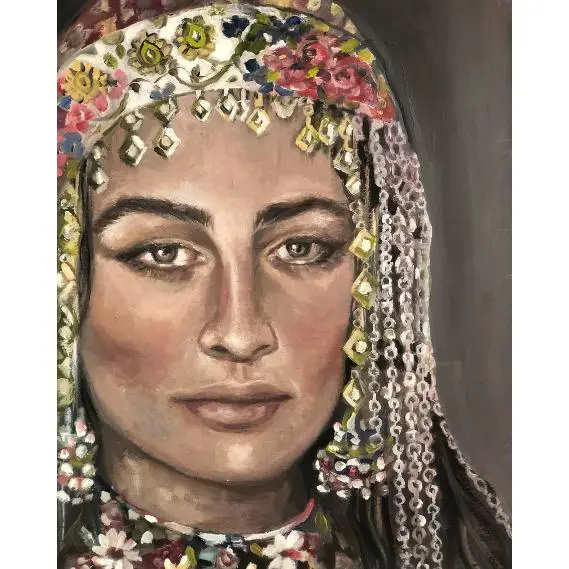
One of the most remarkable psychological effects of abstract art is projection. Because the imagery is non-representational, it leaves room for your subconscious to step in.
Viewers project their inner world onto what they see. A single brushstroke might remind you of wind; a burst of red might echo joy, longing, or memory. The painting becomes a mirror — reflecting the viewer’s own emotional landscape.
In my studio, I often witness this during consultations. Two people can stand before the same painting and describe it in completely different ways — one sees energy, another feels peace. Both are true. The artwork meets them where they are.
This open-endedness is what makes abstraction so deeply personal. You’re not being told what to see; you’re being invited to discover what you feel.
That’s also what I discuss in my upcoming piece on the dialogue between abstract and figurative art, where I explore how both styles reflect emotion through different languages of form.
Our connection to art is shaped not only by what we see but by what we remember. The limbic system — the part of the brain tied to emotion and long-term memory — responds instinctively to visual cues. A texture may recall a childhood wall; a shade of blue, the sea; a curve, a familiar gesture.
These associations arise below conscious awareness. You don’t think, “this reminds me of my grandmother’s garden.” You simply feel warmth, nostalgia, or melancholy. That’s why abstract art can stir memories you didn’t know you carried.
For me, painting often feels like uncovering those same hidden connections. The act of layering colour becomes a quiet way of revisiting emotion — a kind of reflection without words.
In a world that rewards clarity and explanation, abstraction permits us to pause — to not know. It restores a balance between logic and emotion, something modern life often forgets.
Psychologically, we crave moments of ambiguity because they open space for imagination. Abstract art offers that space. It reminds us that beauty doesn’t have to be literal to be understood.
That’s also why many people find living with abstract work grounding. It holds uncertainty gracefully. You can return to the same piece for years and see something new each time — depending on your own state of mind.
When collectors tell me how a painting’s meaning shifts with their mood, I smile. That change is the point — it means the artwork is alive, continuing to evolve with them.
Recent studies in neuroaesthetics suggest that viewing abstract art can influence mood and reduce stress. Gentle colour gradients and rhythmic forms have been shown to activate the parasympathetic nervous system — the body’s natural “rest and restore” mode.
In simpler terms, being with abstract art can calm the mind.
That’s why I often guide viewers through slow-looking exercises. Even one minute of quiet observation can steady the breath, slow the heart rate, and anchor awareness. It’s art as mindfulness — art as breath.
You can read more about this mindful approach in my reflection on art and presence. The practice isn’t just aesthetic; it’s a gentle form of psychological healing through stillness.
Collectors often describe owning abstract art as living with emotion on the wall. The psychology of collecting isn’t just about investment — it’s about resonance.
When someone chooses a painting, they’re usually responding to a feeling they can’t quite name. Over time, that artwork becomes part of their daily rhythm. It shapes the emotional temperature of their home.
I’ve seen clients fall in love with palettes that mirror their personality, or select compositions that bring balance to their surroundings. In many ways, collecting abstract art is a subconscious form of self-expression.
For those interested in the more practical side, I explore how emotional connection and long-term value intersect in investing in abstract art.
At its core, abstract art transcends difference. It communicates feeling through pattern, colour, and movement — the universal language of emotion. Whether you live in London or Tokyo, that shared human response remains the same.
In cities like London, this connection between emotion and space becomes especially visible. Modern interiors and heritage buildings often amplify the contrast and calm of abstraction. I explore this idea further in my piece on modern abstract art in London homes, where I discuss how contemporary spaces influence how we experience colour and form.
We all know what tension feels like — or release, or stillness. Abstract art gives those sensations form. It’s empathy in colour.
And because abstraction allows infinite interpretation, it reminds us there’s no single right way to see the world. The painting and the viewer complete each other — one gives, the other receives — both change.
This is what I mean when I say that abstract art isn’t just a style; it’s a state of being. It’s where emotion, psychology, and presence meet.
If you’d like to explore how this idea connects to interior design, my piece on decorating with wall art shows how emotional tone and placement can shift how we experience art at home.
If this piece has deepened your understanding of how abstract art connects emotion and perception, I invite you to take the next step in bringing that connection into your home. Shop now to discover original paintings that bring balance, colour, and emotion into your space.
Or, if you’d like something truly personal, we can collaborate on a bespoke commission designed around your mood, story, and environment. Commission yours here.
Contact us now to begin your journey — every painting starts with a conversation, and ends with a feeling.
Because abstract art leaves space for personal projection. Each viewer brings their own memories, emotions, and associations to it — so no two experiences are ever the same.
Yes. Research in art therapy and neuroaesthetics suggests that viewing non-representational art can calm the nervous system by engaging visual focus and emotional reflection at the same time.
Cool tones like blue and green promote peace and relaxation, while warm hues such as red, orange, and yellow evoke vitality and movement. A thoughtful balance between them creates harmony.
Absolutely. That’s one of the most meaningful aspects of connecting with abstract work. The emotional response often precedes thought — it’s your subconscious recognising resonance.
Try slowing down. Let your eyes follow the composition, notice your breathing, and observe what feelings arise. Viewing art mindfully enhances both emotional and sensory connection.

